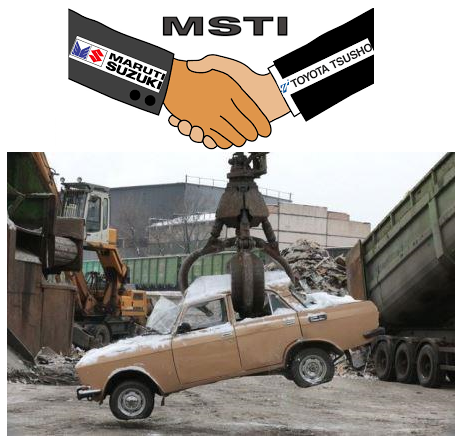

Indian market leader in the four-wheeler automotive segment, Maruti Suzuki and the trading arm of Japanese auto giant Toyota Motors, Toyota Tsusho's vehicle dismantling and recycling joint venture which is labelled as Maruti Suzuki Toyotsu India Private Limited (MSTI), located in Noida, Uttar Pradesh, is gearing to propel from July 2021.

The joint venture, MSTI is equally owned by both the companies in equal equity percentage.
As per the information gathered, the centre at Noida is all set and some trials were on. However, in 2019, the joint venture was publicised, while the operations were to supposed commence during the last financial year.
An official stated: “Because of Covid it is a bit behind schedule. The operations are expected to start from July and right now trials are on. To begin with, the centre will start with the old test vehicles of Maruti Suzuki India (MSIL), which are at end of life now.”
Another official commented that all the types of machinery are in place to dismantle vehicles. Accessories, metals like aluminium among others, engines will be processed for recycling.

“All the scrapped materials will be sold to scrap dealers. Anybody/ individuals who want to scrap their old vehicles can bring to the unit, and in return, they will be provided with a certificate with details to enable them to get incentives on buying new cars, according to the government norms”, he further said.
In March 2021, Nitin Gadkari, Minister of Road Transport and Highways announced: “People who junk their old vehicles and buy a new one under the purview of ‘Vehicle Scrappage Policy’ will receive about five-per cent rebate from automakers on purchase of new vehicles.”
Another development that has been notified is MSIL’s used car unit True Value will also bring old vehicles for scrappage from its outlets.
MSTI will be shouldering the responsibility of procuring and dismantling End-of-Life Vehicles (ELVs). The process will incorporate thorough solid and liquid waste management as per the Indian laws and globally approved quality and environment standards.
Responses








